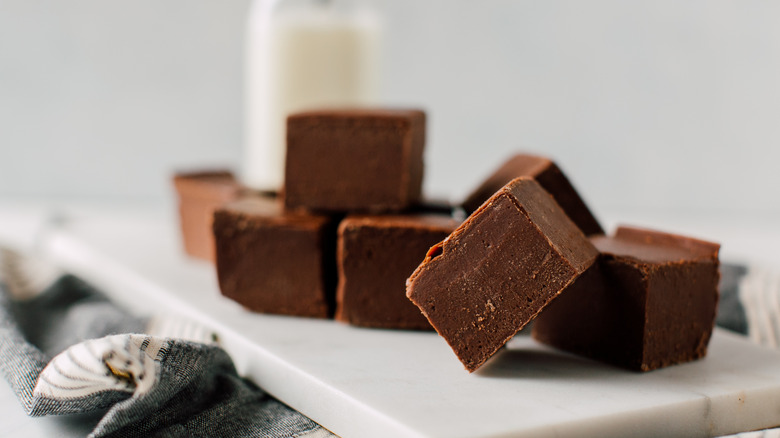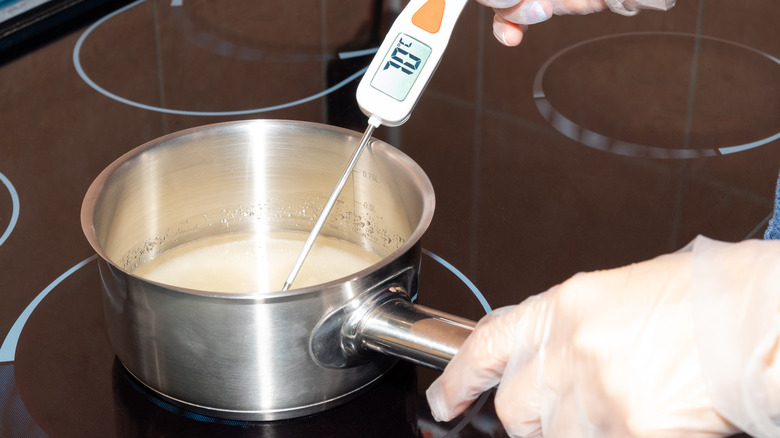The Reason Your Homemade Fudge Is A Crumbly Mess
Certain desserts, like chocolate mousse and cheesecake, just need to be made with a specific texture in order to get them right. If you've ever had rubbery mousse or crumbly cheesecake, you know what we mean. And whether you're making classic chocolate fudge, salted caramel fudge, or old-fashioned peanut butter fudge, a key part of making this decadent treat is creating a thick, smooth consistency.
There are a few different ways to make fudge, but our recipe for classic fudge uses marshmallow fluff as the secret ingredient to ensure the perfect texture, while espresso powder enhances the chocolate flavor. However, many recipes, like our old-fashioned peanut butter fudge, use condensed milk instead, which melts with chocolate chips before setting at room temperature. Whichever way you make it, fudge generally needs to include three main components – butter, sugar, and milk – as well as any additional flavoring ingredients, such as crushed candy canes for peppermint fudge. And whether you go with marshmallow fluff or condensed milk, keep this key technique in mind to make sure your fudge comes out perfectly soft.
Follow the recipe to a tee when cooking the sugar
Certain steps in fudge recipes need to be followed exactly in order to nail down the right texture. This is because fudge requires you to crystalize the sugar a little, meaning it needs to be cooked past its boiling point. However, it's important to bring the sugar to the exact right temperature. If it doesn't boil, your fudge will end up too mushy, and if it cooks for too long, you'll end up with a dry, crumbly mess. This is why many recipes recommend using a candy thermometer, so you know exactly when to remove your mixture from the heat.
In our recipe for classic chocolate fudge, for example, sugar should be boiled with butter, evaporated milk, and espresso powder for exactly 5 minutes — no more, no less. You may be tempted to play it safe and pull your pot off the stove early, but resist that inclination, as the sugar needs time to fully dissolve. Likewise, some of the liquid needs to evaporate while the sugar turns into a syrup – 237 to 239 degrees Fahrenheit is generally when you know you're good to go.
If you follow the recipe precisely and your fudge still isn't quite right, check that your candy thermometer is working properly. Or, if using the candy thermometer and working with the sugar proves too difficult, look for a simple recipe that only uses chocolate chips, butter, and sweetened condensed milk, as these tend to be easier for fudge beginners.

